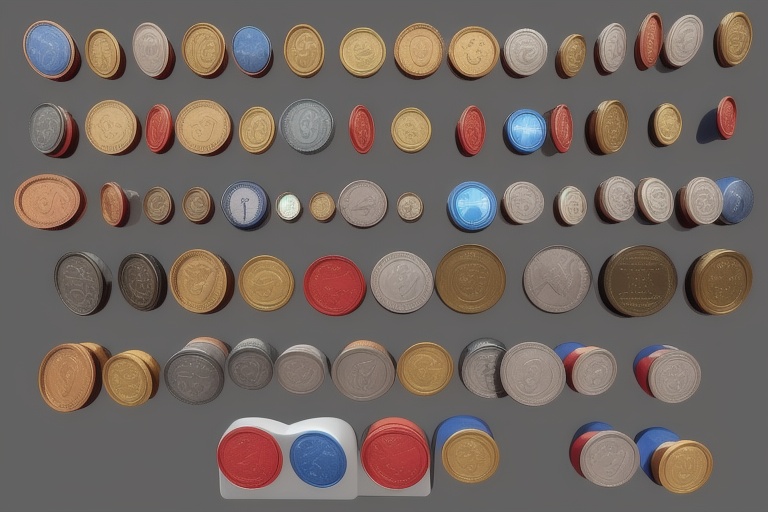Welcome to our blog dedicated to the captivating universe of coin collecting and valuation. This vibrant world is teeming with detail and history, and even among millions of minted coins, a select few stand out due to their unique imperfections. These anomalies, known as mint errors, can elevate the worth of a coin and pique the interest of numismatists everywhere. In this discussion, we delve into five specific mint errors to keep an eye out for, including off-center strikes, wrong planchet errors, double strikes, die adjustment strikes, and strike-thru mistakes. Recognizing the potential value of these coins can be a rewarding venture for both novices and veteran collectors.
Welcome to our blog dedicated to the captivating universe of coin collecting and valuation. This vibrant world is teeming with detail and history, and even among millions of minted coins, a select few stand out due to their unique imperfections. These anomalies, known as mint errors, can elevate the worth of a coin and pique the interest of numismatists everywhere. In this discussion, we delve into five specific mint errors to keep an eye out for, including off-center strikes, wrong planchet errors, double strikes, die adjustment strikes, and strike-thru mistakes. Recognizing the potential value of these coins can be a rewarding venture for both novices and veteran collectors.
Understanding Mint Errors: A Collector's Guide
The process of coin minting is one of precision and repetitiveness, designed to produce coins that adhere strictly to specific standards. However, in the high-speed environment of the minting presses, discrepancies occasionally occur, resulting in what we refer to as mint errors. While these errors are typically caught and discarded before reaching the public, some manage to escape into circulation. When they do, they become valuable pieces sought by collectors for their rarity and the unique attributes they bring to any coin collection.
1. The Appeal of Off-Center Struck Coins
Off-center struck coins occur when the die does not align correctly with the planchet, or blank, during striking. This misalignment can cause part of the coin to be struck outside the intended area, leaving it with an incomplete image and an irregular shape. The value of these coins largely depends on the degree of the misalignment and the visibility of the date and mintmark.
2. The Rarity of Wrong Planchet Errors
Wrong planchet errors, sometimes referred to as denomination errors, arise when a coin is struck onto a planchet meant for a different denomination. An example of this would be discovering a quarter design on a penny planchet, a discrepancy easily verified by the coin's weight and size. These errors are intriguing for their unexpectedness and the story they tell of a momentary lapse in the minting process.
3. The Intrigue of Double Struck Coins
Coins that are double struck present with overlapping images, the result of being struck by the minting dies more than once. This can be due to a failure in the machinery to properly eject the coin before a second strike occurs. Double struck coins capture the attention of collectors due to their visually striking defects, sometimes displaying two clear and distinct designs.
4. The Subtlety of Die Adjustment Strikes
Die adjustment strikes are a less common but still notable error, characterized by a weak or nearly absent design. They occur when the dies strike with less than the necessary force, creating a coin with faint details. Coins with die adjustment strikes appeal to collectors who seek out the unusual and are fascinated by the nuances of the minting process.
5. The Distinctiveness of Strike-Through Error Coins
A strike-through error occurs when an extraneous material comes between the die and the planchet during striking. Common materials include grease, string, or even small metal fragments which, when pressed, leave an indentation or design on the coin. Strike-through errors are particularly unique because each foreign object leaves a different mark, ensuring that no two coins are exactly alike.
These five types of mint errors illustrate just how nuanced and unpredictable coin collecting can be. They challenge collectors to be vigilant and knowledgeable, lending an element of treasure hunting to the hobby. Finding a mint error coin not only adds diversity to a collection but potentially adds significant value to it as well.
Where to Find Mint Error Coins
For those on the hunt for these exceptional pieces, there are various avenues to consider. Coin shows, auctions, and reputable online retailers such as APMEX can be fantastic sources for mint error coins. Engaging with the coin collecting community and building relationships with seasoned dealers can also lead to exciting discoveries. Additionally, keeping informed through blogs, guides, and forums can help you develop a keen eye for spotting these errors.
Expanding Your Collection
Now that you're equipped with knowledge about common mint errors, it's crucial to remember to keep an open mind and to always be inquisitive.
Information for this article was gathered from the following source.

